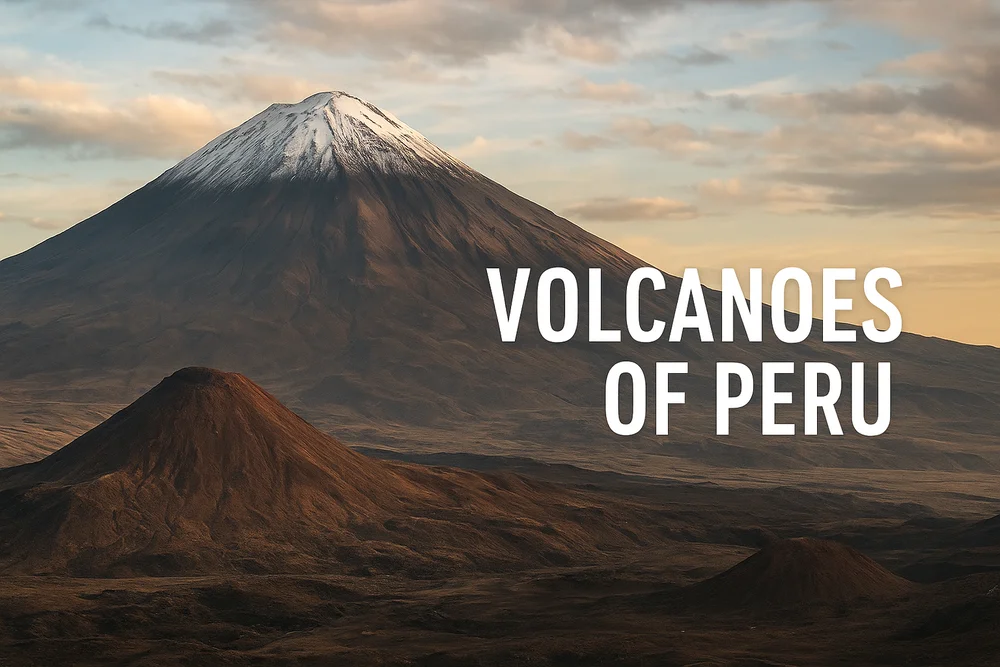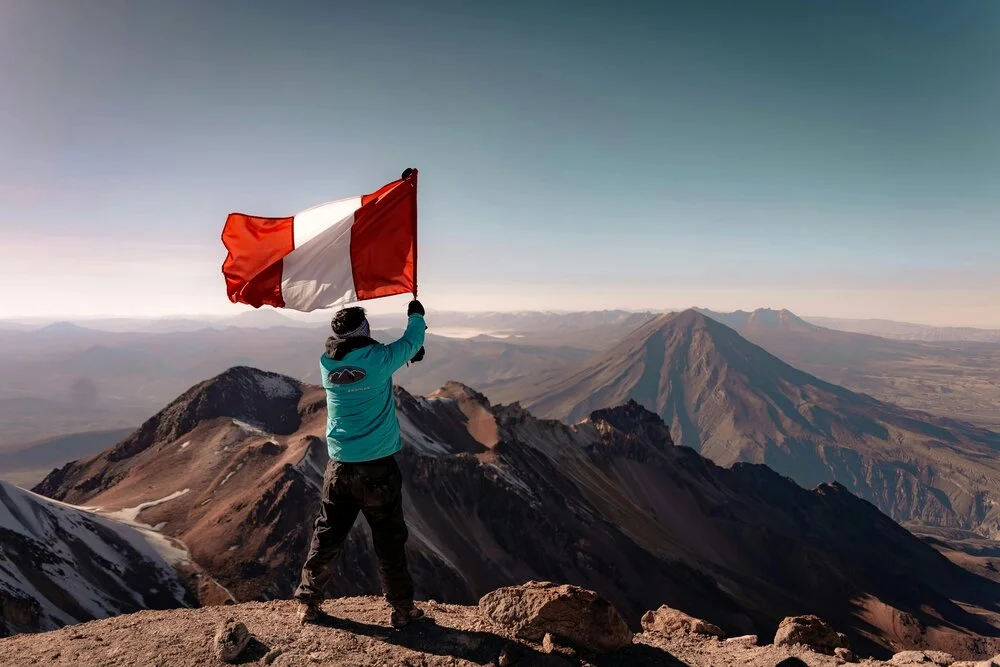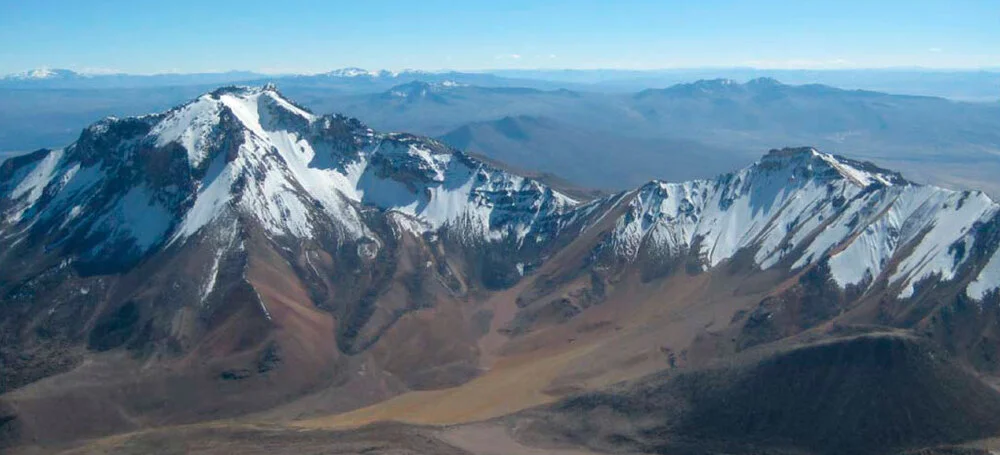An Andean Travel Experience Guide to the Most Powerful Landscapes in South America
Peru is often celebrated for its ancient civilizations, rainforest biodiversity, and world-renowned gastronomy—but beneath its landscapes lies something even more powerful: fire.
More than 412 volcanoes shape the southern Andes, 16 of them active or potentially active. Some breathe gently; others roar with ash, light, and movement. All of them define the spirit and identity of the region.
At Andean Travel Experience, we believe volcanoes are not just geological formations they are living apus, guardians of the Andean world, sources of stories, rituals, and unforgettable adventures.
“To understand the Andes, you must first understand its volcanoes.” — ATE Resident, Arequipa Region
The Volcano Belt of Southern Peru
Where fire meets high altitude.
Southern Peru is one of the most active volcanic corridors in South America, home to majestic peaks surrounding Arequipa, Moquegua, Tacna, and Caylloma. These volcanoes are part of the Pacific Ring of Fire, shaped by millennia of tectonic activity.
Volcano Regions in Peru
- Arequipa: Misti, Chachani, Pichu Pichu, Ampato
- Caylloma Province (Colca): Sabancaya & Hualca Hualca
- Moquegua: Ubinas (Peru’s most active), Ticsani
- Tacna: Tutupaca & Yucamane
Each destination offers incredible trekking, cultural storytelling, and dramatic scenery ideal for photographers, experienced hikers, and curious travelers alike.
Why Volcanoes Matter: Culture, Geology & Living History
Volcanoes are more than landscapes they are storytellers.
Cultural Significance
For the Incas, volcanoes were apus, sacred beings. Ritual offerings, sacrifices, and pilgrimages were common. Archaeologists even discovered Inca children’s remains inside the Misti crater, offering evidence of ancestral ceremonies.
Architectural Influence
The eruptions created sillar, a white volcanic stone used to build Arequipa’s iconic cathedral, monasteries, and casonas giving rise to its nickname “The White City.”
Environmental Impact
- Ash deposits enrich soil
- Volcanic minerals feed rivers
- Gases shape ecological dynamics
Today’s Reality
Some volcanoes remain in constant activity, influencing agriculture, air quality, and local communities. Sabancaya alone produces over 30 explosions per day, while Ubinas has been erupting periodically for decades.
The Most Iconic Volcanoes in Peru
A curated selection of Peru’s most powerful and storied volcanoes.
1. Misti Volcano The Lord of Arequipa
- Elevation: 5,822 m (19,101 ft)
- Last major eruption: 1985
- Location: Arequipa Region
Misti is Peru’s most famous volcano, towering above Arequipa like a guardian watching over the city.
Why It’s Special:
- Its ash created the sillar that built Arequipa
- It is visible from almost every viewpoint in the city
- It hosts major archaeological discoveries (including Inca burials)
- Its symmetrical cone makes it one of the most photographed volcanoes in Peru
Quick Facts
- Estimated age: 800,000 years
- Inca emperors offered sacrifices here
- Produces 50 micro-earthquakes per day
Dreaming of climbing Misti? Ask us about our 2-day and 1 night Misti Summit Expedition. On the form on the right or at the end of the page.
2. Sabancaya Volcano: Peru’s Second Most Active Giant
- Elevation: 5,967 m (19,577 ft)
- Activity: Constant since 2016
- Location: Caylloma Province, near Colca
Sabancaya meaning “the volcano that spits” is one of the most active volcanoes in the Americas.
Current Activity Snapshot
- Up to 30 explosions per day
- Ash plumes rising 4 km above the crater
- Over 2,000 micro-earthquakes daily
Ongoing orange alert
More than 14 districts in the Colca Valley are affected by ashfall, making monitoring essential.
Visiting Colca? ATE curates safe routes with real-time volcanic updates. Check them out on our Peru Tours.
3. Ampato: The Snow-Crowned Summit
- Elevation: 6,288 m (20,630 ft)
- Activity: Dormant
- Location: Caylloma Province, near Colca Canyon
Ampato famous for its eternal snowcap and the discovery of the Inca Ice Maiden “Juanita” is one of southern Peru’s most iconic volcanoes.
Current Activity Snapshot
- No recent eruptions recorded
- Stable geological behavior
- Occasional seismic events typical of dormant volcanoes
- Low-risk zone for travelers
- Surrounding glaciers continue to retreat due to climate conditions
Why Ampato Matters
- Sacred Inca mountain where one of the best-preserved mummies in the world was discovered
- A striking part of the Andean skyline above Colca
- Offers challenging high-altitude expeditions for expert climbers
4. Chachani: The Gentle Giant
- Elevation: 6,075 m (19,931 ft)
- Activity: Dormant
- Location: Arequipa Region, north of the city
Chachani known as the “Gentle Giant” for its non-technical ascent is one of the easiest 6,000-meter peaks in the world to summit.
Current Activity Snapshot
- No eruptions in recorded history
- Low seismic activity
- Considered geologically stable
- Minimal volcanic gas emissions
- Popular year-round for high-altitude trekking
Why Chachani Matters
- One of the few 6k peaks accessible to non-expert climbers
- Panoramic views of Arequipa, Misti, and the surrounding desert landscapes
- A favorite challenge for acclimatized adventure travelers
5. Pichu Pichu: The Seven Peaks Mountain
- Elevation: 5,664 m (18,582 ft)
- Activity: Extinct
- Location: Arequipa Region, southeast of the city
Pichu Pichu a long, rugged volcanic ridge made up of seven distinct summits is a sacred mountain deeply woven into Arequipa’s ancestral history.
Current Activity Snapshot
- Extinct volcano with no eruptive activity
- Very low seismic movement
- Stable geological structure
- Dry, high-altitude climate year-round
- Frequent site for archaeological discoveries
Why Pichu Pichu Matters
- Home to Inca ceremonial sites and ancient offerings
- Offers dramatic ridge-line treks with panoramic views
- A favorite for climbers seeking solitude and off-the-beaten-path routes
- Its silhouette defines Arequipa’s southeastern horizon
6. Ubinas: The Most Active Volcano in Peru
- Elevation: 5,672 m (18,609 ft)
- Activity: Highly active
- Location: Moquegua Region, Ubinas District
Ubinas Peru’s most active volcano has a long history of eruptions dating back thousands of years and remains one of the most closely monitored peaks in the country.
Current Activity Snapshot
- Frequent ash emissions during active periods
- Explosive activity recorded in recent years
- Ash plumes rising 2–5 km above the crater during eruptions
- Persistent gas emissions (SO₂)
- Moderate-to-high seismic activity linked to magmatic movement
- Surrounding towns often placed under yellow or orange alerts
Why Ubinas Matters
- Peru’s most eruptive volcano, essential to national monitoring systems
- Lava dome dynamics provide key volcanic research insights
- Ashfall can affect nearby valleys and agricultural areas
- Its dramatic, perfectly shaped cone dominates the Moquegua highlands
Arequipa: The White City or the City of Volcanoes?
Four volcanoes embrace one extraordinary Andean city.
While Arequipa’s nickname comes from its white sillar buildings, many argue it should be called the City of Volcanoes.
The Four Protectors of Arequipa
- Ampato – the highest
- Chachani – the traveler’s favorite
- Misti – the symbol of the city
- Pichu Pichu – the sunrise volcano
Wherever you stand, a volcano frames the horizon. Whether you're exploring monasteries or boutique rooftops, the Andes rise around you in all directions.
Planning to visit Arequipa? Explore our Arequipa City & Volcano Viewpoints Tour.
Trekking & Visiting Peru’s Volcanoes
- For experienced hikers, nature lovers, and the culturally curious.
- Best Volcano Treks in Peru
- Misti Summit (2 days) – challenging but iconic
- Chachani (1–2 days) – ideal for first 6,000m ascent
- Pichu Pichu (full day) – accessible, scenic
- Ampato Expedition – advanced, glacier terrain
What to Bring
- High-quality trekking boots
- Layers for cold (-15°C at night)
- Trekking poles
- Water, electrolytes, and snacks
- Altitude pills (as needed)
Weather & Best Time to Visit
April to November offers the clearest skies and safest conditions.
Safety, Alerts & When to Visit
Volcanoes like Sabancaya and Ubinas require monitoring. At ATE, we follow Ingemmet and IGP alerts daily to adjust routes and maintain safe experiences.
Alert Levels (Simplified)
- Green: No activity
- Yellow: Increased seismic activity
- Orange: Explosive eruptions (Sabancaya today)
- Red: Major eruption
“Travel near active volcanoes is safe if you travel with specialists who monitor activity in real time.”
FAQs
Are the volcanoes safe to visit?
Yes, with expert monitoring and trained guides.
Can families visit volcano viewpoints?
Absolutely. Many volcanoes offer spectacular views without trekking.
Do I need training for Misti?
A good fitness level is enough; ATE handles acclimatization and logistics.
Ready to Stand Before the Giants of Fire?
Peru’s volcanoes are more than landscapes they are living forces that shape culture, history, and adventure. Whether you dream of summiting Misti, exploring the Colca Valley under Sabancaya’s plume, or capturing the perfect sunrise over Pichu Pichu, our team at Andean Travel Experience crafts journeys that are immersive, meaningful, and completely tailored to you.
Begin your volcano-inspired adventure today. Contact us and let us design a journey worthy of the Andes.




